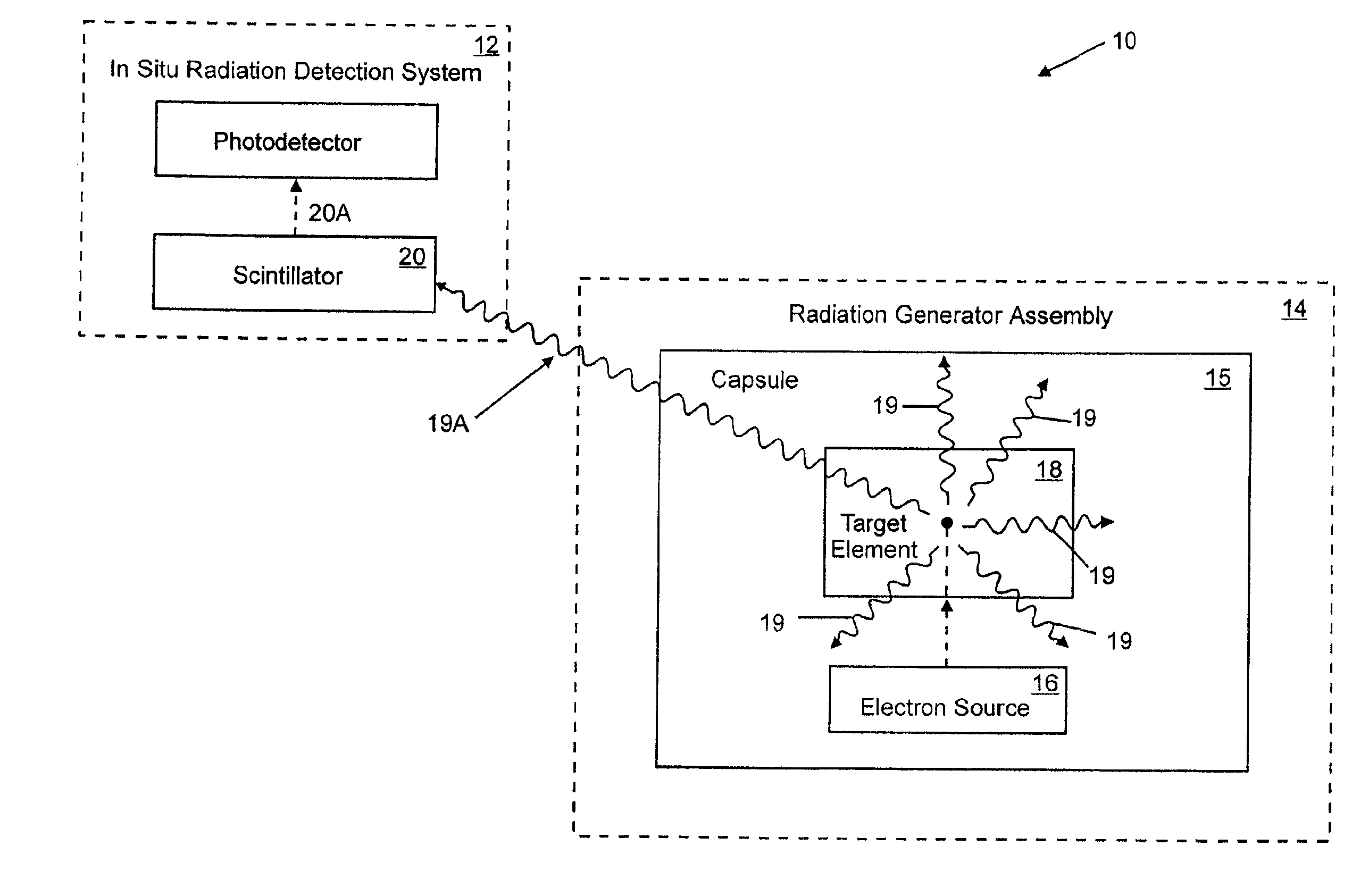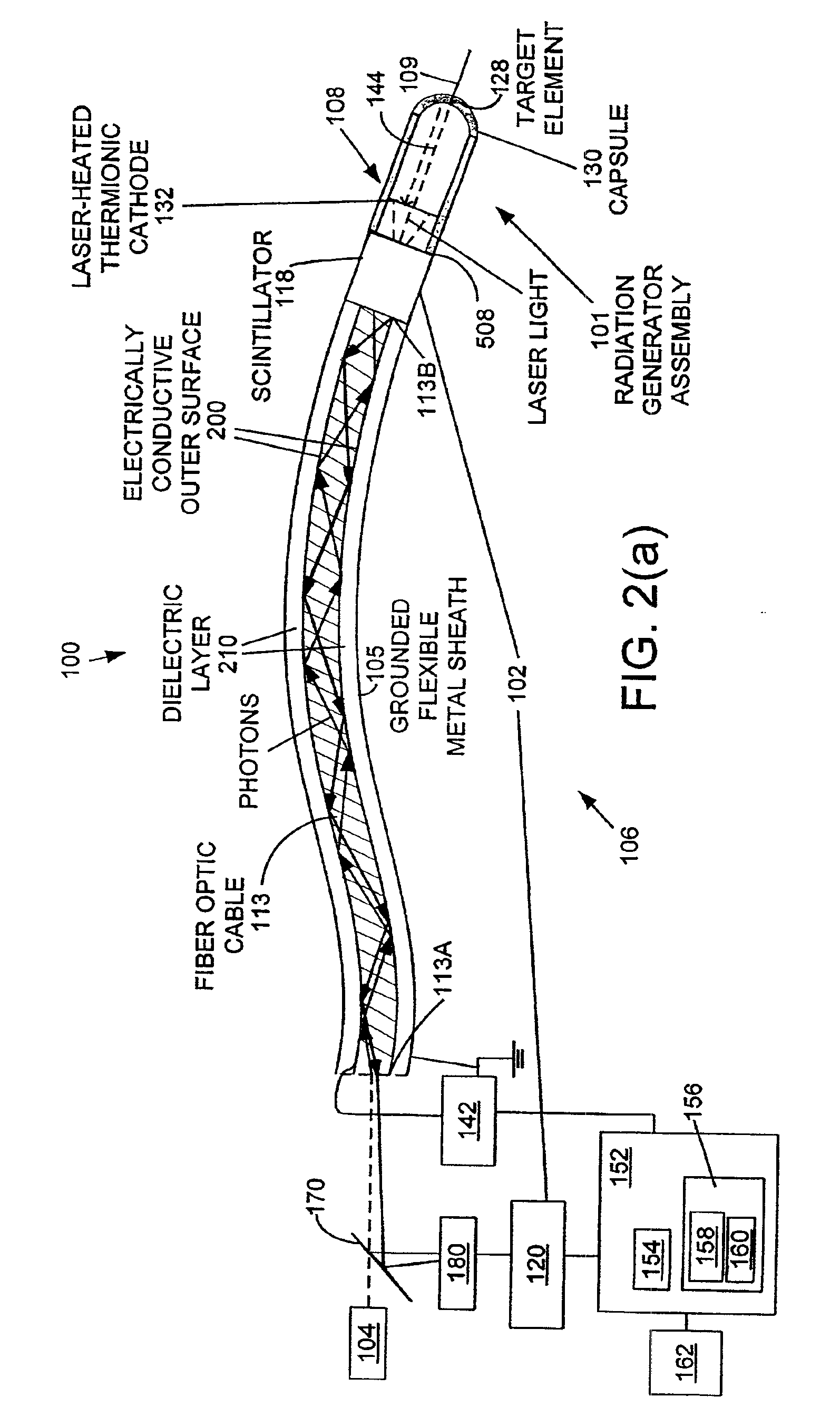Therapeutic radiation source with in situ radiation detecting system
a radiation detection and radiation source technology, applied in the field of miniaturized, low-power radiation sources, can solve the problems of imposing considerable hazards to both the handling personnel and the environment, and affecting the safety of patients
- Summary
- Abstract
- Description
- Claims
- Application Information
AI Technical Summary
Benefits of technology
Problems solved by technology
Method used
Image
Examples
Embodiment Construction
[0028]FIG. 1 is a schematic block diagram of a therapeutic radiation source 10, constructed in accordance with the present invention and including an in situ radiation detection system 12. The therapeutic radiation source 10 includes a radiation generator assembly 14 having an electron source 16, and a target element 18 adapted to emit therapeutic radiation 19 in response to incident accelerated electrons from the electron source 16. The electron source 16 and the target element 18 are enclosed within an evacuated capsule 15. The in situ radiation detecting system 12 monitors in real time the amount of therapeutic radiation 19 emitted by the target element 18. In a preferred embodiment, the therapeutic radiation 19 are x-rays, although the scope of this invention is not limited to x-rays. The in situ radiation detecting system 12 includes a scintillator 20 disposed along a path of a portion (19A) of the emitted therapeutic radiation. The scintillator 20 emits scintillator light 20A ...
PUM
 Login to View More
Login to View More Abstract
Description
Claims
Application Information
 Login to View More
Login to View More - R&D
- Intellectual Property
- Life Sciences
- Materials
- Tech Scout
- Unparalleled Data Quality
- Higher Quality Content
- 60% Fewer Hallucinations
Browse by: Latest US Patents, China's latest patents, Technical Efficacy Thesaurus, Application Domain, Technology Topic, Popular Technical Reports.
© 2025 PatSnap. All rights reserved.Legal|Privacy policy|Modern Slavery Act Transparency Statement|Sitemap|About US| Contact US: help@patsnap.com



